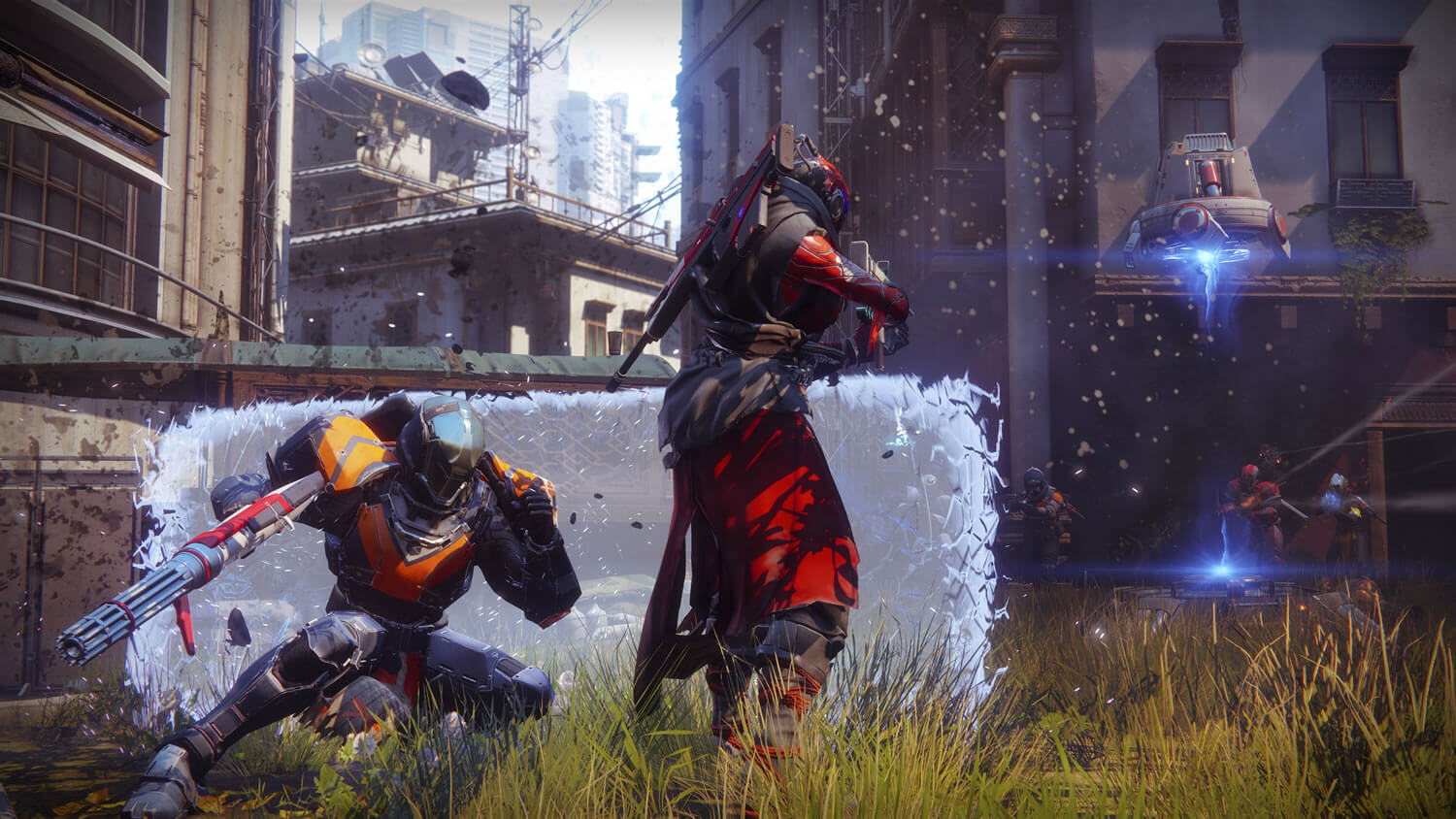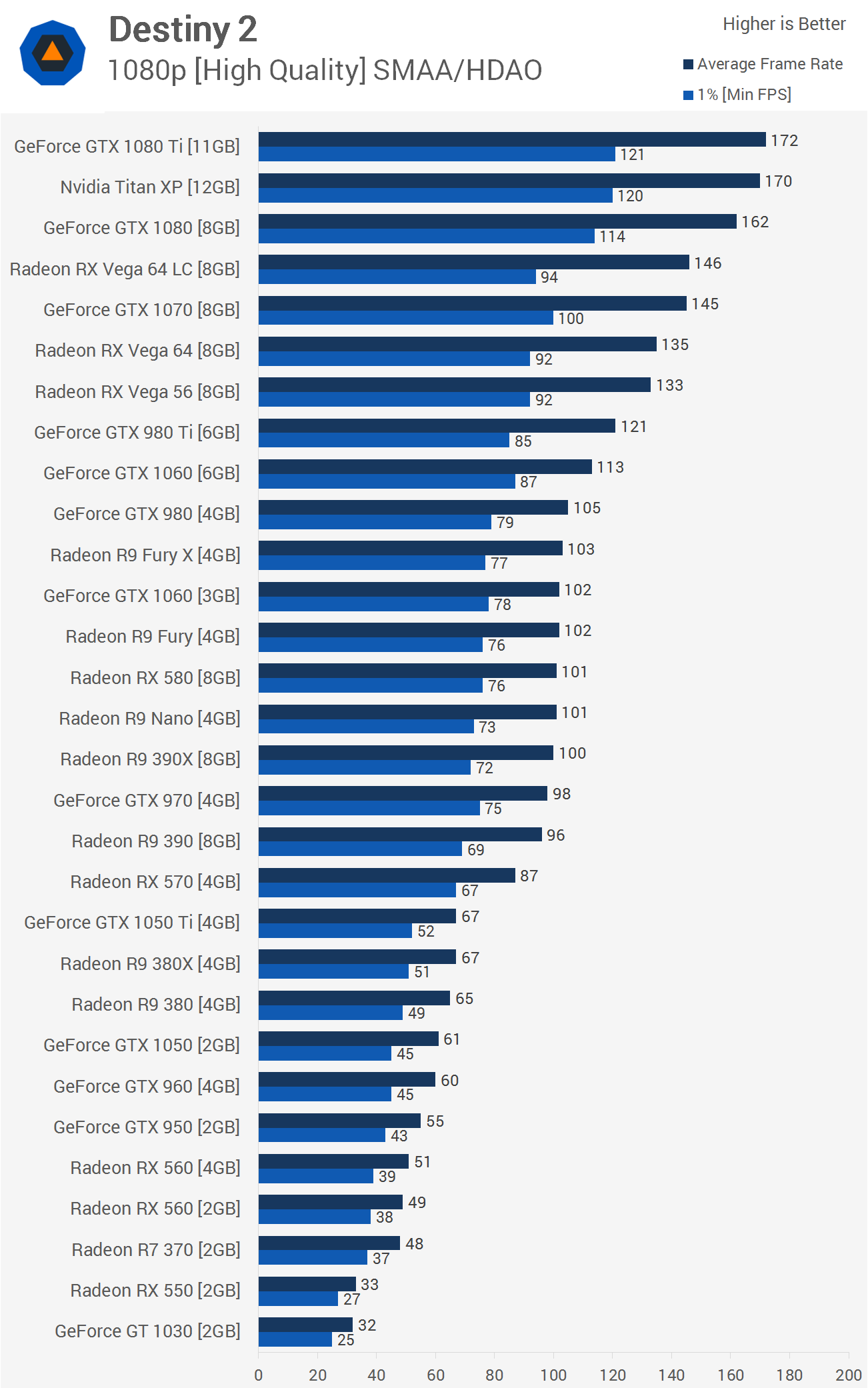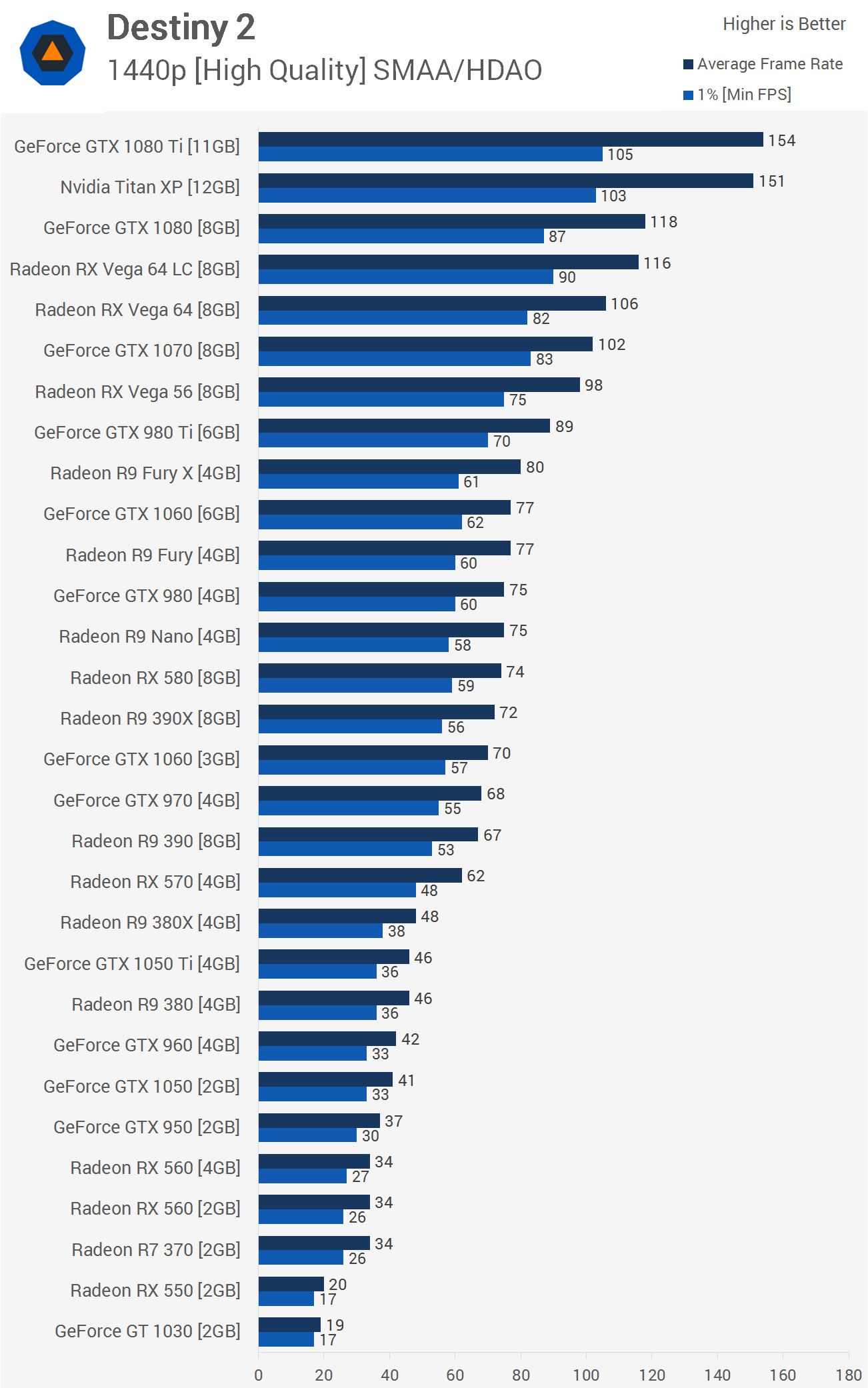
Opened just days ago to those who preordered the game, today we have a beta copy of Destiny 2 on hand for a heap of GPU benchmarking. Although the PC retail release won't be until late October, this seemed like a great opportunity to see what kind of hardware the game is likely to require.
We recognize that performance is subject to change by the time the title launches, but it's worth noting that AMD and Nvidia released driver updates about a week ago to better support Destiny 2 ahead of the beta and both Radeon and GeForce graphics cards seem to run fine so far.
Our Core i7-7700K test system was clocked at 4.9GHz, though as a bit of a spoiler, we found that Destiny 2 played well with cheaper processors as well. We also looked at the Ryzen 5 1600and will compare those numbers to the Core i7-7700K later.
For now we have 30 GPUs to focus on, 17 of which are from the current generation lineup with the other 13 being from last season. All of the cards were tested at 1080p, 1440p and 4K using Destiny 2's 'high' quality preset, which is the second highest quality preset.
The maximum quality preset -- called 'highest' -- completely smashes performance because of MSAA being enabled. Seeing as I didn't really notice a difference between MSAA and SMAA, I opted for the second-highest quality preset ('high') which uses the latter anti-aliasing method.
Since you can't save your progress during the single-player tutorial/intro, I only tested the first 60 seconds of the game. After running it more than 90 times I can safely say that I have it memorized, though this approach was a massive pain because we had to exit the game after every single run to reset everything. I hope when the game is officially released we can find a significantly more efficient testing method.

Benchmark Time

First up are the 1080p results. As you can see there are many cards capable of delivering between 96 and 105fps on average and plenty more that are good for 60fps or better.
Ignoring the high-end gear for now as we're only at 1080p, we find that to keep things above 60fps at all times, gamers will require an RX 570 or GTX 1060 3GB and frankly those are some pretty mild demands. For now Nvidia has a clear advantage in this title, at least at lower resolutions and we see this when comparing GPUs such as the RX 580 and GTX 1060.
Looking at the previous generation GPUs we see they have no trouble maintaining well over 60fps at all times, as demonstrated by the Radeon R9 390 and GeForce GTX 970.
Even the R9 380 and GTX 960 do well, never dipping below 60fps. It's interesting to see that the Fury series wasn't really able to pull ahead of the R9 390X, not to mention that it trailed the GTX 980 and got completely stomped by the GTX 980 Ti. Fine wine ain't working here folks.

We see a wider spread of results at 1440p and again there are a huge amount of GPUs capable of pushing over 60fps. Those seeking 100fps or greater will either need a high-end GPU or will have to back the quality preset down to medium.
Increasing the resolution to 1440p greatly reduces the margins and now just three frames stand between the GTX 1060 and RX 580, both of which provided excellent performance at this reasonably high resolution. For an average of around 100fps you will want to seek out a GTX 1070 or Vega 56 GPU and to reach well beyond 100fps the GTX 1080 Ti will be required.
The Fury X series starts to recover as well, though even here the Fury X is well down on the GTX 980 Ti. Meanwhile the GTX 970 edged ahead of the R9 390, though it has to be said even here both provided exceptionally smooth frame rates.





0 comments: